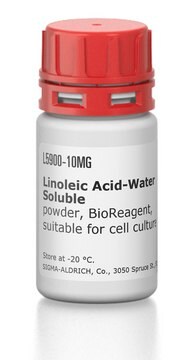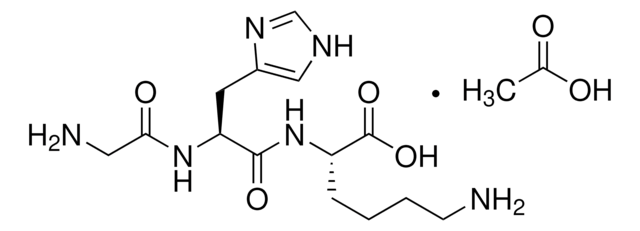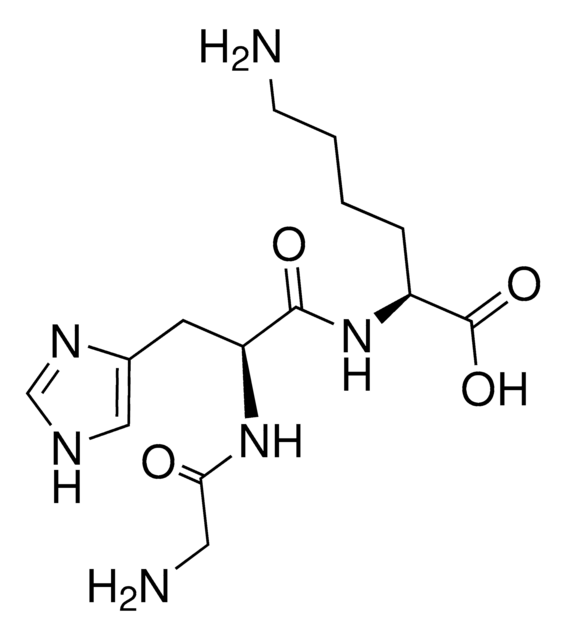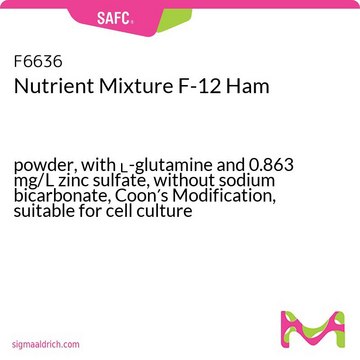Key Documents
G7387
Gly-His-Lys acetate salt
BioXtra, γ-irradiated, suitable for cell culture
Synonim(y):
Liver cell growth factor
About This Item
Polecane produkty
pochodzenie biologiczne
synthetic (organic)
Poziom jakości
sterylność
γ-irradiated
linia produktu
BioXtra
Postać
powder
masa cząsteczkowa
400.43 g/mol
opakowanie
pkg of 5 mg
metody
cell culture | mammalian: suitable
zanieczyszczenia
<2 EU/mL
kolor
white
rozpuszczalność
H2O: soluble 0.5 mg/mL, clear, colorless
temp. przechowywania
−20°C
ciąg SMILES
CC(O)=O.NCCCC[C@H](NC(=O)[C@H](Cc1c[nH]cn1)NC(=O)CN)C(O)=O
InChI
1S/C14H24N6O4.C2H4O2/c15-4-2-1-3-10(14(23)24)20-13(22)11(19-12(21)6-16)5-9-7-17-8-18-9;1-2(3)4/h7-8,10-11H,1-6,15-16H2,(H,17,18)(H,19,21)(H,20,22)(H,23,24);1H3,(H,3,4)/t10-,11-;/m0./s1
Klucz InChI
MGNUTAFMLGJBGV-ACMTZBLWSA-N
Szukasz podobnych produktów? Odwiedź Przewodnik dotyczący porównywania produktów
Amino Acid Sequence
Zastosowanie
- as a component of the serum-containing medium to culture human thyroid cells
- as a supplement to culture fisher rat thyroid cells
- as a component of the Dulbecco′s modified Eagle Medium (DMEM)/HamF12/mesenchymal stem cell media to culture mesenchymal stem cells
Kod klasy składowania
11 - Combustible Solids
Klasa zagrożenia wodnego (WGK)
WGK 3
Temperatura zapłonu (°F)
Not applicable
Temperatura zapłonu (°C)
Not applicable
Certyfikaty analizy (CoA)
Poszukaj Certyfikaty analizy (CoA), wpisując numer partii/serii produktów. Numery serii i partii można znaleźć na etykiecie produktu po słowach „seria” lub „partia”.
Masz już ten produkt?
Dokumenty związane z niedawno zakupionymi produktami zostały zamieszczone w Bibliotece dokumentów.
Klienci oglądali również te produkty
Nasz zespół naukowców ma doświadczenie we wszystkich obszarach badań, w tym w naukach przyrodniczych, materiałoznawstwie, syntezie chemicznej, chromatografii, analityce i wielu innych dziedzinach.
Skontaktuj się z zespołem ds. pomocy technicznej







